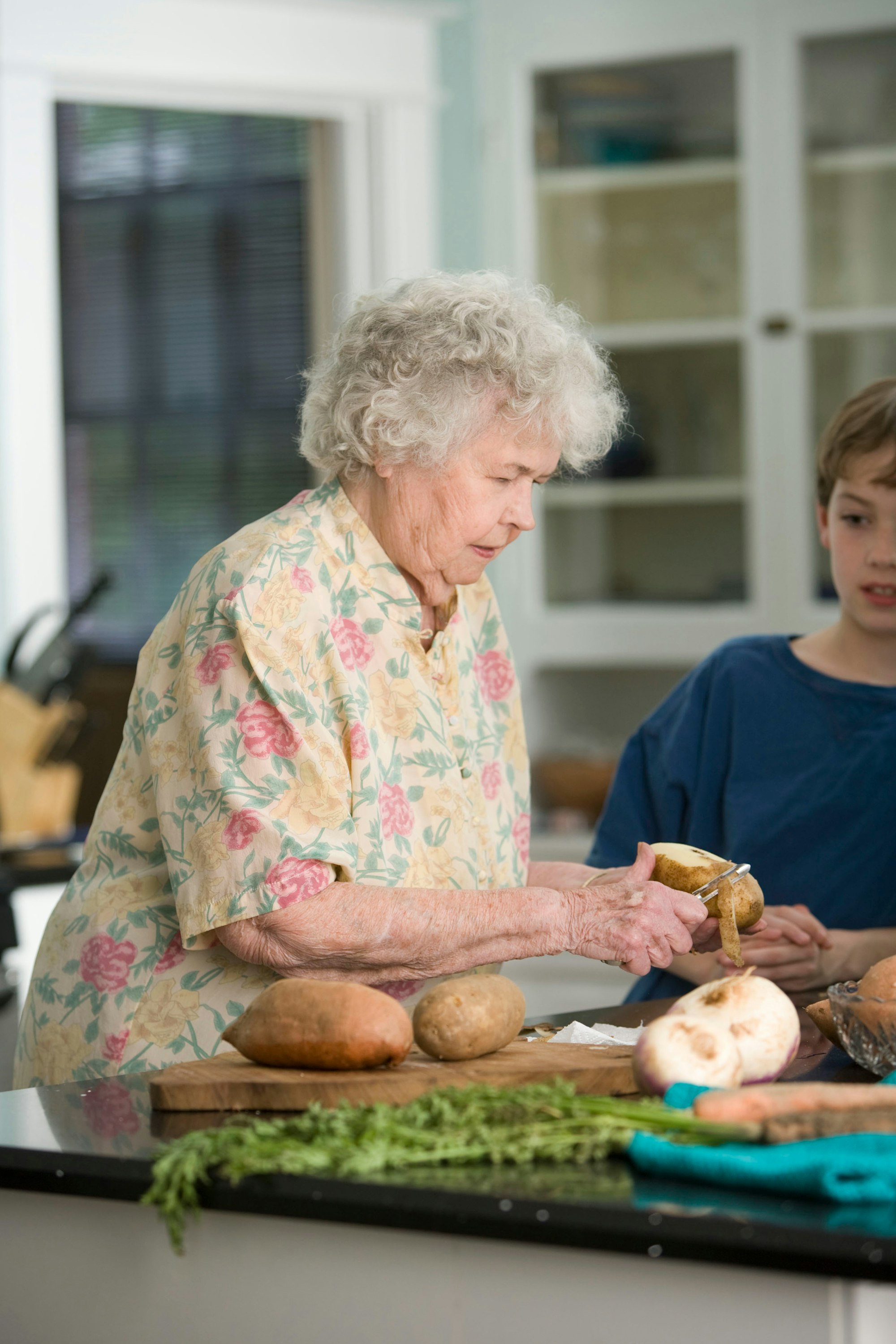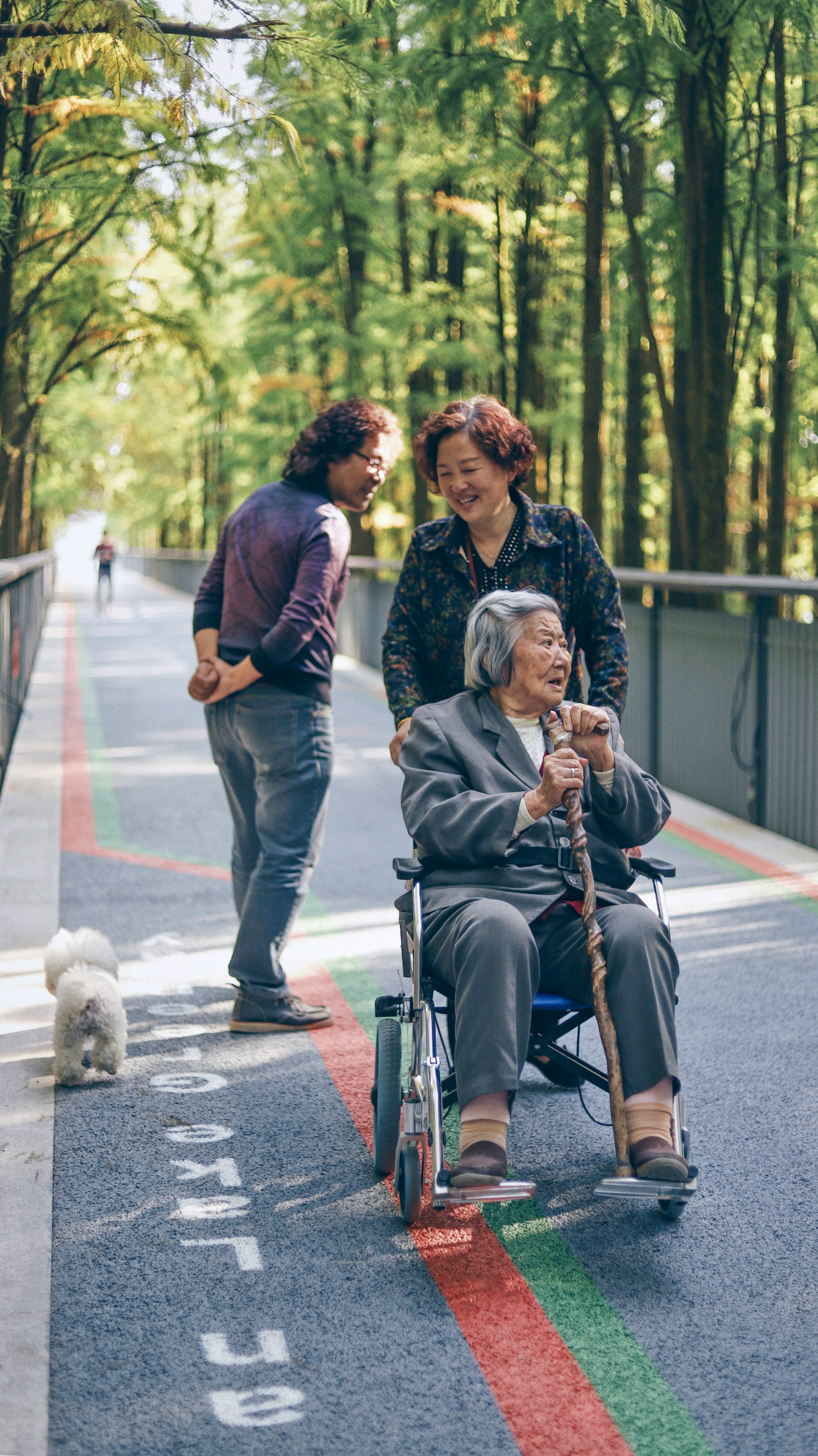Long Distance Caregiver Tips and Strategies for Success

Caring for an elderly loved one can be challenging, but it becomes even more complex when you live far away. Long-distance caregivers face unique hurdles in providing care and support, but with the right knowledge and resources, it’s possible to navigate these challenges with confidence. In this blog post, we’ll explore long distance caregiver tips and strategies for success, from building a strong caregiving team to utilizing technology for remote monitoring and coordination. Let’s dive in and learn how to become a successful long-distance caregiver.
Key Takeaways
- Long-distance caregivers face unique challenges, but communication and preparation can help them provide tailored support.
- Build a strong caregiving team by delegating tasks and fostering open communication.
Utilize local resources, technology tools & stay connected to keep your loved one safe & supported from afar.
What are things a long distance caregiver can do?
Being a long-distance caregiver means taking on various roles to support your loved one. You may assist with financial matters, arrange for professional caregivers or necessary medical equipment, find suitable care facilities, provide emotional support and relief to the primary caregiver, coordinate information and updates, organize emergency plans and paperwork, and ensure a safe environment. As your family member's needs evolve, your role as a long-distance caregiver will also adapt.
Getting Started Taking the First Steps
Are you a new long-distance caregiver? Here are some first steps to get you started:
Start by asking the primary caregiver and the person receiving care how you can be most helpful. Their input is invaluable in understanding their specific needs.
Reach out to friends who are caregivers and ask for their suggestions on ways to provide support. They might have valuable insights and advice based on their own experiences.
Take the time to research local resources that could be useful in your caregiving journey. Knowing what services are available in the person's area can make a big difference in providing the right care.
Gain a good understanding of the person's health issues and other needs. This will allow you to be better prepared and provide appropriate assistance.
Make it a priority to visit the person as often as you can. Not only can you offer direct help, but you can also give the primary caregiver a break by taking over for a short period of time.
Don't worry if you don't have a lot of caregiver skills. There are resources available to help you learn. Look for local chapters of the American Red Cross or nonprofit organizations focused on caregiving. Medicare and Medicaid may even cover the cost of training.
If you're unsure where to find local resources for your family member, check out "Where can I find local resources for my family member?" It provides a helpful guide to finding services for older adults and their families.
Take these first steps to ensure you're providing the best care possible for your loved one, no matter the distance.
Long Distance Caregivers and the Challenges They Face

Long-distance caregivers are individuals who provide care and support to elderly loved ones living over an hour away, taking on various caregiving responsibilities. These caregivers face unique challenges, such as handling medical care, staying in touch, and dealing with unexpected issues. For many families, having to juggle responsibilities and coordinate care from a distance can be overwhelming.
Gaining knowledge about your loved one’s illness, medication, and available resources is a cornerstone of successful long-distance caregiving. Establishing healthy boundaries with family members and ensuring families schedule conference calls to discuss caregiving plans and responsibilities will also help ensure everyone is on the same page, including each family member.
Communication is key; make sure to stay up-to-date on your loved one’s health, treatments, medications, and healthcare resources in their area.
Are you a caregiver wondering how to best support your family member's health? Here's what you need to know:
First, educate yourself about their condition and treatment. This knowledge will help you anticipate any changes, prevent emergencies, and manage their healthcare. Plus, it'll make it easier to communicate with their doctor.
Next, make sure you have permission to access their medical and financial information. Create a notebook with all the important details about their care, services, contacts, and finances. Keep it updated and make copies for other caregivers.
When it comes to doctor's appointments, be prepared. Make a list of questions and take notes during the visit. Ask the person you care for how you can be most helpful. Don't forget to bring a list of all their medications and dietary supplements.
During the appointment, let the person answer the doctor's questions unless asked otherwise. Avoid having private conversations with the doctor and include everyone in the discussion.
Respect their privacy and step out of the room when needed. If you live out of town, discuss with the doctor how to stay informed about their health.
Last, ask the doctor for recommendations on community resources. Social workers in larger medical facilities can provide valuable information and support.
Assessing the needs and preferences of the care recipient

Understanding their situation, needs and preferences is a prerequisite for providing meaningful help to your loved one. This includes being attentive to warning signs during phone calls, such as changes in their mood or hints of discomfort.
Having a clear understanding of the care recipient’s illness, medications, and resources will help predict changes in their condition, avoid crises, and manage their healthcare effectively. By being proactive in assessing their needs and preferences, you can tailor your support and caregiving efforts to provide the best care possible, even from a distance.
Are you a caregiver looking for ways to better understand and manage your family member's health? We've got you covered! By learning about their condition and treatment, you can prevent crises, anticipate illness, and make talking to the doctor a breeze.
But that's not all. Make sure you have the necessary permission to access medical and financial information to ensure you're fully informed. Create a handy notebook with all the important details about medical care, social services, and contact numbers. It's a great resource to have and can be shared with other caregivers too.
When it comes to doctor's appointments, we've got some tips to make them easier for both you and your loved one. Bring a list of questions and take notes during the appointment for future reference. Don't forget to ask the person you care for how you can be most helpful during the visit. And always include them in the conversation with the doctor.
If you're far away from your family member, don't worry! Stay connected through phone calls, emails, and conference calls with healthcare professionals. And remember to take care of yourself as a caregiver too.
Visiting aging parents or relatives? Talk to them beforehand to find out what they would like to do and what responsibilities you can help with. Create realistic goals for your visit and make time for non-caregiving activities, like watching a movie or playing a game.
In summary, being a caregiver can be challenging, but with the right information and strategies, you can provide the best care possible for your family member.
Building a Caregiver Team Partner Group
A robust caregiving team, including an assisted living facility team, is vital in long-distance care, as they assure the presence of reliable individuals to step in when necessary. Building a strong team involves delegating tasks, sharing responsibilities, and fostering open communication among family members, friends, and professional caregivers.
To create a great caregiving team, it’s important to outline the roles and responsibilities for each team member, ensuring everyone is on the same page and tasks are delegated correctly. Providing training and support to team members will help them feel confident in their positions and promote teamwork and collaboration.
Staying Connected with Your Loved One

Preserving an emotional bond with your loved one remains important, regardless of the distance. Regular phone calls, video chats, and visits can help strengthen bonds and monitor their well-being. Having a private phone line installed or gifting them a cell phone can facilitate communication and keep you updated on their condition.
When visiting your loved one, plan activities that you both enjoy, such as watching movies, playing games, or attending worship services together. Make the most out of your visits by discussing their preferences beforehand and focusing on what’s most important, saving other tasks for the next visit.
Organizing Important Documents
For long-distance caregivers, arranging important documents is indispensable, enabling swift access to all the vital information and rapid responses in emergencies. This includes gathering and securely storing medical and financial information, as well as other legal records, such as life insurance policies and wills.
One way to keep track of important documents is by organizing the elderly person’s healthcare documents in one shared space, like a notebook or a secure online document. Make sure to make copies for other caregivers and update the information regularly. By keeping all vital information organized, you’ll be better prepared to handle any unexpected situations that may arise.
Understanding Legal and Financial concerns
Long-distance caregivers should be aware of various legal and financial concerns that may arise, such as:
- Power of Attorney
- Healthcare Proxy
- Estate Planning
- Financial Management
Resolving these matters is paramount in maintaining your loved one’s financial and legal affairs in order.
Remaining informed about your loved one’s insurance policies, such as Long-Term Care Insurance, Medicaid, and Medicare, can help cover the costs of care for your loved one. Additionally, understanding the tax implications of gifts, transfers of assets, and other financial transactions will help ensure that their finances are managed properly.
Managing finances for afar
Managing your loved one’s finances from a distance involves taking care of bill payments, budgeting, and monitoring financial accounts to ensure their financial stability. Setting up automatic payments, creating a budgeting system, and tracking expenses are all effective ways to stay on top of finances.
To keep an eye on financial accounts, set up alerts for suspicious activity and create a system for tracking account balances and investments. This will help ensure that your loved one’s finances are well-managed, even from afar.
Enhancing Home Safety and Comfort

Providing a safe and comfortable living environment is fundamental to your loved one’s well-being. Making necessary modifications to their home can help reduce the risk of falls and improve overall safety. Some modifications to consider include:
- Installing grab bars in the bathroom
- Adding extra lighting
- Removing tripping hazards
- Installing handrails on stairs
- Installing non-slip flooring
By implementing these modifications, you can create a safer and more comfortable living environment for your loved one.
An in-home fall assessment can also be helpful in identifying potential hazards and areas for improvement within the home. By taking these steps to enhance home safety and comfort, you’ll be actively contributing to your loved one’s quality of life, even from a distance.
Utilizing technology for remote monitoring and coordination
Technology can play a significant role in long-distance caregiving by allowing caregivers to:
- Stay updated on their loved one’s condition
- Coordinate care more efficiently
- Utilize telehealth platforms
- Use wearables
- Access mobile apps
- Utilize video conferencing tools
- Utilize remote monitoring systems
These options are available to assist in the caregiving process.
Leveraging these technologies allows caregivers to manage care more efficiently, maintain connection with their loved ones, and gain access to crucial information and resources, despite the distance. Embracing technology can make long-distance caregiving more manageable and effective, ultimately resulting in better care for the elderly person.
Supporting Emotional Well-being- Coping with Guilt and Stress

Long-distance caregivers often experience feelings of guilt and stress, which can take a toll on their emotional well-being. To address these feelings, recognize and accept your emotions, remember that guilt is a normal emotion, and try to focus on the positive aspects of your caregiving journey.
Managing stress is also crucial for long-distance caregivers. Here are some strategies to help alleviate stress and maintain emotional well-being.
- Take regular breaks
- Exercise
- Try relaxation techniques
- Seek professional help Placing a priority on self-care is key in balancing your loved one’s care with your own mental and emotional well-being.
Navigating Healthcare Management And Medical Issues
Navigating healthcare management and medical issues is a critical aspect of long-distance caregiving. Understanding the illnesses and medications of the care recipient and utilizing local resources and support services can help manage healthcare and prevent crises.
Organized preparation, having medical information and documents at hand, and being proactive with questions and updates are important for maintaining effective communication with healthcare providers. Keeping track of all medications and treatments is also crucial in ensuring that your loved one receives the proper care.
Communicating with Health Care Providers
Effective communication with healthcare providers is essential for long-distance caregivers to stay informed about their loved one’s medical condition. Scheduling regular check-ins, having a list of questions or concerns ready, and taking notes during appointments can help facilitate effective conversations with healthcare providers.
Follow-up communication is also vital to ensure that the healthcare provider’s instructions are being followed, and the care recipient’s condition is being monitored. Keeping healthcare professionals informed about any relevant medical history, allergies, and medications will help them provide the best care for your loved one.
Managing Medications and Medical Records

Managing medications and medical records is an important aspect of long-distance caregiving. Organizing and securely storing healthcare information, ensuring medication adherence, and coordinating with healthcare providers can help ensure your loved one’s well-being.
Creating a comprehensive system for organizing and tracking healthcare information, such as using a list of all medications, pill organizers, or medication reminder apps, can help you stay on top of your loved one’s healthcare needs. Regularly reviewing and updating this information with healthcare providers will help maintain accurate records and ensure appropriate care.
Handling Medical Emergencies from a distance

Dealing with medical emergencies remotely can be daunting, yet having a plan, knowing who to contact, and being ready to make swift decisions is essential for the care recipient’s well-being. Gathering as much information as possible about the emergency and the patient’s condition can help you stay calm and take appropriate action.
In the event of a medical emergency, follow these steps:
- Call the local emergency number or 911 to dispatch help immediately.
- Communicate with the patient’s primary care physician or healthcare provider.
- Provide relevant medical history, allergies, and medications to ensure the best possible care.
Preventing Elder Abuse and Neglect

Preventing elder abuse and neglect is a crucial responsibility for long-distance caregivers. Recognizing warning signs can help identify potential cases of abuse or neglect. Some common warning signs include:
- Unusual spending
- Unexplained bruises or injuries
- Bed sores
- Mood changes
- Increased isolation
By being aware of these warning signs, caregivers can take appropriate action to protect their loved ones.
To prevent elder abuse and neglect, here are some steps you can take.
- Educate yourself and others on the warning signs of elder abuse.
- Regularly check in with your loved one to monitor their well-being.
- Establish a support network of trusted individuals who can help look out for your loved one.
- Encourage social engagement to reduce isolation and vulnerability.
- If you ever suspect something is wrong, report it immediately.
- Stay involved in your loved one’s care and maintain open communication with caregivers.
By following these steps, you can help ensure the safety and well-being of your loved one.
Continuous Learning and Skill Development
For long-distance caregivers to deliver the best care possible, continual learning and skill enhancement is necessary. Taking online or in-person courses can help caregivers learn essential caregiving skills, such as safely transferring a senior from a bed to a chair, preventing bed sores, and providing first aid.
Staying informed about best practices in caregiving, setting goals for self-improvement, and seeking mentorship from experienced caregivers can also contribute to skill development and personal growth. By continuously learning and developing your skills, you’ll be better equipped to handle the challenges of long-distance caregiving.
Utilizing Local Resources and Support Services
Local resources and support services, including nonprofit organizations focused on long-distance caregiving, can play a significant role in this area. Organizations like the Area Agency on Aging, home care agencies, and community programs for seniors can provide valuable assistance and support.
To find local resources and support services, reach out to your local Area Agency on Aging, search online, or ask your local senior center for help. Utilizing these resources can help alleviate some of the burdens of long-distance caregiving and ensure your loved one receives the care and support they need.
Long distance Caregiving Tools and Resources

Long-distance caregiving tools and resources, such as online platforms, mobile apps, and support groups, can help caregivers manage care, stay connected, and access valuable information. Caregiving apps can assist with organization, medication tracking, and coordinating care with other family members.
Telehealth services and remote monitoring devices provide medical advice, prescriptions, and healthcare services from a distance, ensuring that your loved one receives appropriate care even when you’re not physically present. By leveraging these tools and resources, long-distance caregivers can better support their loved ones and manage the challenges of caregiving from afar.
Planning For Transitions and Role of Long Distance Caregiver During Transitions
During transitions in their loved one’s care, such as changes in needs or living situation, long-distance caregivers play a pivotal role. Planning for these transitions involves anticipating changes, coordinating with the caregiving team, and making necessary adjustments to ensure a smooth transition.
By staying proactive and involved in the care recipient’s life, long-distance caregivers can help guide and support their loved ones through transitions, ensuring that their needs are met and their well-being is maintained.
Being prepared for transitions and understanding your role as a long-distance caregiver during these changes can make all the difference in providing the best possible care for your primary caregiver.
Summary
Long-distance caregiving presents unique challenges, but with the right knowledge, tools, and resources, it’s possible to provide compassionate and effective care for your loved one. From building a strong caregiving team to utilizing technology for remote monitoring and coordination, the strategies outlined in this blog post can help make long-distance caregiving more manageable. By staying informed, connected, and proactive, you can navigate the complexities of long-distance caregiving and ensure that your loved one receives the care and support they need.
Frequently Asked Questions
How can I help a long-distance caregiver?
Provide access and build a team, consider sharing responsibilities with family members, hire a geriatric care manager and ask others for help; these are some of the key steps to providing long-distance caregiving.
How do I become a successful caregiver?
To become a successful caregiver, it’s important to have compassion and be sensitive to others’ needs, work as part of a team, stay positive, know yourself, use good communication skills, be attentive and observant, exercise patience and flexibility, and take care of yourself.
Compassion and sensitivity are essential for a successful caregiver. Working as part of a team is also important, as is staying positive and knowing yourself. Good communication skills, attentiveness, and observance are also key. Patience and flexibility are also important, as is taking care of yourself.
When your elderly parents live far away?
Staying connected with your elderly parents from a distance can be possible with the help of home care services. These services can provide your parents with quality medical care, medication management, regular check-in visits and as much or as little involvement as needed.
Home care services can be tailored to meet the individual needs of your parents, ensuring that they receive the best possible care. They can also provide companionship and emotional support, helping to reduce feelings.
How can technology help with long-distance caregiving?
Technology can help long-distance caregiving by providing remote monitoring, coordination, and connectivity with your loved one.
Apps and telehealth services make this possible from afar.
What are some ways to prevent elder abuse and neglect?
Staying involved in your loved one’s care, recognizing warning signs, and maintaining open communication with caregivers are all effective ways to prevent elder abuse and neglect.
You might also like this article:




